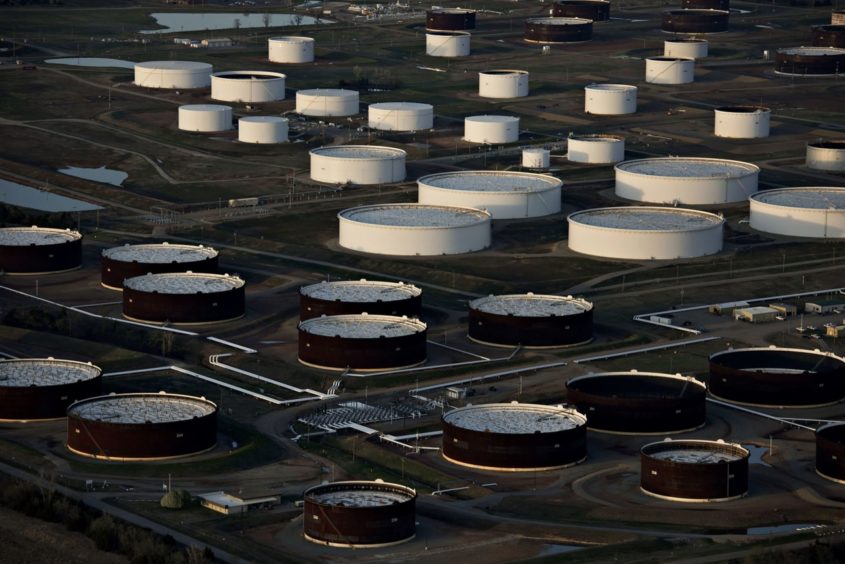
Oil edged higher after the biggest drop since November as the fallout from Russia’s invasion of Ukraine continues to rattle markets.
Futures in New York rose near $111 a barrel after plunging 12% on Wednesday. The US approved legislation barring imports of Russian crude as lawmakers of both parties demanded stronger punishment of the major oil producer for its war in Ukraine. The ban will go into effect 45 days after it’s signed into law.
Oil has soared since the invasion, in part due to fears that the loss of Russian energy flows may stretch an already tight market. Still, the heads of OPEC and Chevron Corp. said this week there’s no shortage of oil, while Iraq insisted there’s no need to ramp up production more than planned.
Oil sank on Wednesday after the United Arab Emirates called on OPEC+ to boost output faster, though the nation’s energy minister appeared to temper that message a few hours later. OPEC+, which counts Russia as a key member, has so far resisted calls from consumers to pump more, arguing that the surge in prices is driven by geopolitical tensions rather than an oil shortage.
“OPEC+ will have to jump through many hoops to agree to deviate from its current road map,” said Vandana Hari, the founder of Singapore-based Vanda Insights, describing the market as “panic-stricken.”
The invasion is reverberating through global markets and heaping inflationary pressure on governments that are trying to encourage growth after the pandemic. Everything from wheat to metals and natural gas is soaring, with retail gasoline prices in the US jumping to a record this week.
Prices
- West Texas Intermediate for April rose 1.9% to $110.74 a barrel on the New York Mercantile Exchange at 1:25 p.m. in Singapore after dropping as much as 1.6% earlier.
- Brent for May settlement gained 3.2% to $114.67 on the ICE Futures Europe exchange after falling 13% on Wednesday.
Brent remains in a deep backwardation structure, where near-dated contracts are more expensive than later-dated ones, indicating nervousness about tight supply. The global benchmark’s prompt spread was $4.33 a barrel, compared with $1.39 at the start of last month.
Separately, US crude stockpiles fell by 1.86 million barrels last week, while distillate inventories – a category that includes diesel – shrunk for an eighth week to the lowest level since 2014, according to the Energy Information Administration. Cushing crude inventories slid for a ninth week.
